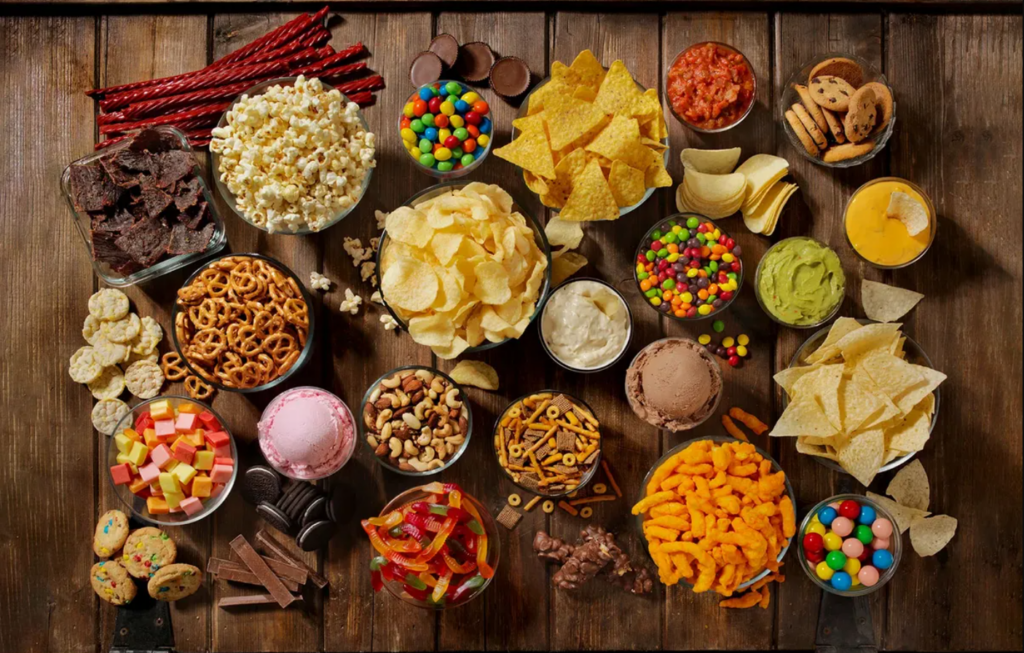How observing other people indulge in junk food might reduce cravings and aid in weight loss 2023

nite at home. You’re watching your favorite show from the couch. A delicious burger is advertised. The camera zooms in on the crisp salad, tender steak, rich, creamy sauce, crunchy French fries, and one individual savoring this delicious taste spectrum. You worry your diet may suffer. We disagree.
In a series of Journal of Public Policy & Marketing experiments, we discovered that ads portraying individuals consuming junk food made dieters eat less. This seems odd, yet mental imagery studies supports it. Recent research reveal that visualizing actions or emotions stimulates brain networks similar to those associated to their real performance or experience.
Imagine eating—what happens?
Images can greatly influence our life. Neuroimage studies show that seeing a hammer hit someone activates pain-related neural networks. These images will cause pain-related emotions and behavior.
Food consumption also suffers. Consumption imagery includes close-ups of food being eaten, like a pizza ad. Consumption images have been shown to mislead people into thinking they ate the food.

This matters why? This is crucial since thinking about eating makes us full. Researchers asked respondents to imagine eating 3 or 30 M&Ms in 2010. They gave them sweets. People who anticipated eating 30 button-shaped chocolates felt full and ate fewer sweets than those who imagined eating 3. Our research led us to examine if the impact holds when individuals see others eating in ads.
Dieters eat less when they watch others eating.
Our Grenoble Ecole de Management lab invited 132 dieting students to watch an ad. Half saw an M&M’s ad with sweets, colors, and a person eating them. Half the students viewed an ad with two animated M&Ms at a supermarket checkout without consumption graphics. We handed each pupil a 70g cup of M&Ms to devour. Students who viewed M&M’s ads with consumption images ate fewer sweets.
130 students viewed a hamburger commercial in our next study. Half of the volunteers imagined eating the hamburger and the other half imagined shooting it. Students then ate chocolate-coated biscuit sticks from a silver bag. Watching the ad and imagining eating the hamburger reduced chocolate-coated biscuit consumption.
Both studies show that dieters will avoid junk food if they see it.
How may diet campaigns reduce your appetite?
We explored if these findings could promote healthy eating in the next study. Dieters would be more influenced by healthy eating promotion commercials with unhealthy consuming pictures.
Four adverts promoted healthy eating:




Our online survey enrolled 594 American individuals. Each participant saw one of four adverts randomly. We requested they
“Imagine opening a bag of chips to munch. 20 chips. How many potato chips would you consume now?”
The commercial featuring consumption pictures made viewers want to consume less chips than the one without. Potato chips were more appealing to individuals who envisioned eating an apple than French fries.
These findings contradict existing public policy that promotes healthy eating through representations of nutritious foods. According to our findings, healthy eating initiatives should promote bad food. Dieters imagine eating junk food and failing to lose weight.Your takeaway?
Health and well-being are increasingly valued. If you’re one of the many who made dieting and healthy eating their top resolution for 2023, don’t cover your eyes when tempting commercials appear. Instead, imagine your lips touching the forbidden food. Science suggests this may reduce unhealthy eating.
